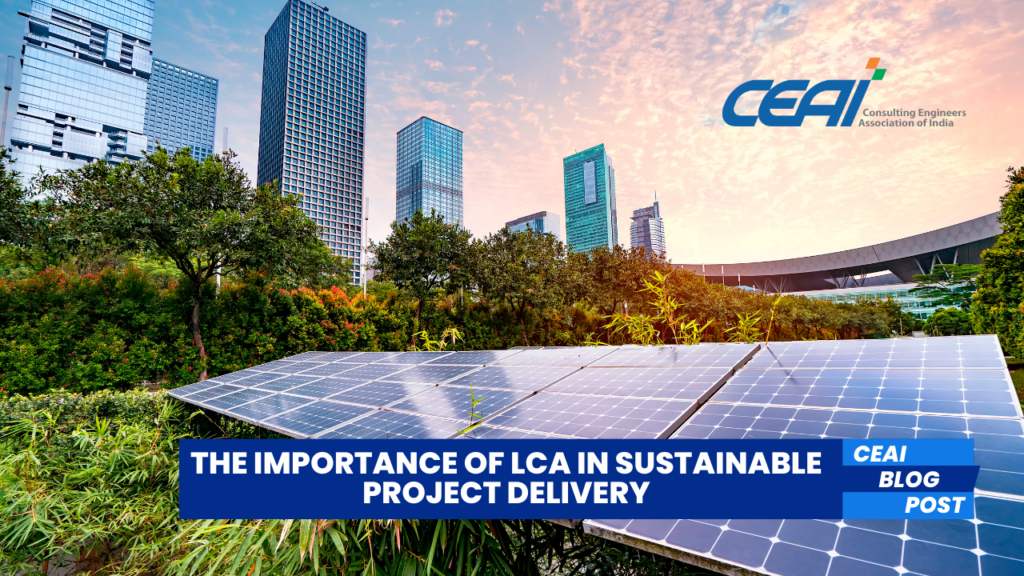
In the ever-evolving world of engineering, sustainability has become a paramount concern. As consulting engineers, we are often tasked with designing and executing projects that not only meet the needs of today but also preserve the environment for future generations. One powerful tool that has emerged to aid in this endeavor is Life-Cycle Assessment (LCA). This guide will delve into the significance of LCA, its applications, and how CEAI members can leverage it to deliver sustainable projects.
Understanding Life-Cycle Assessment
Life-Cycle Assessment (LCA) is a systematic process of evaluating the environmental impacts of a product, process, or service throughout its entire life cycle. This includes everything from raw material extraction, manufacturing, transportation, usage, and eventual disposal or recycling. By taking a holistic view, LCA helps identify areas where environmental improvements can be made, ensuring that sustainability is woven into the fabric of a project from inception to completion.
The Importance of LCA in Sustainable Project Delivery

Holistic Environmental Impact Assessment
Traditional environmental assessments often focus on specific stages of a project, such as construction or operation. LCA, however, provides a comprehensive view of the entire life cycle, allowing for a more accurate assessment of environmental impacts. This helps consulting engineers to identify and mitigate potential environmental hotspots at every stage of the project.
Informed Decision Making
With detailed insights into the environmental impacts of different materials and processes, engineers can make more informed decisions. For example, LCA can reveal that a seemingly eco-friendly material has a high environmental cost during its production phase. Armed with this knowledge, engineers can opt for alternatives that offer a better overall environmental profile.

Compliance and Certification
As sustainability standards and regulations become more stringent, LCA can play a crucial role in ensuring compliance. Many green building certifications, such as LEED and BREEAM, require LCA as part of their evaluation criteria. By incorporating LCA into project planning and execution, CEAI members can ensure that their projects meet or exceed these standards, enhancing their reputation as leaders in sustainable engineering.
Implementing LCA in Engineering Projects
Step 1: Goal and Scope Definition
The first step in conducting an LCA is to clearly define the goals and scope of the assessment. This includes identifying the specific environmental impacts to be evaluated, the life cycle stages to be included, and the functional unit of measurement (e.g., per square meter of building area).
Step 2: Inventory Analysis
In this phase, data is collected on all the inputs and outputs associated with the project. This includes energy and raw material usage, emissions, waste generation, and other relevant factors. Comprehensive data collection is crucial for ensuring the accuracy and reliability of the LCA results.
Step 3: Impact Assessment
The collected data is then analyzed to assess the potential environmental impacts. This involves categorizing the data into impact categories such as global warming potential, ozone depletion, and resource depletion. Advanced software tools and databases, such as GaBi and SimaPro, can aid in this analysis.
Step 4: Interpretation and Reporting
The final step is to interpret the results and draw conclusions. This includes identifying key areas for improvement and making recommendations for enhancing the sustainability of the project. Clear and transparent reporting is essential for communicating the findings to stakeholders and ensuring that the insights gained from the LCA are effectively implemented.
Case Studies: LCA in Action
Green Building Design
One of the most common applications of LCA is in green building design. By evaluating the environmental impacts of different building materials and construction methods, engineers can optimize the design for sustainability. For example, an LCA might reveal that using recycled steel in construction results in significantly lower greenhouse gas emissions compared to traditional steel.
Infrastructure Projects
LCA is also valuable in infrastructure projects such as roads, bridges, and water treatment plants. By assessing the life cycle impacts of different construction materials and maintenance strategies, engineers can design infrastructure that is not only durable but also environmentally friendly. For instance, an LCA might show that using permeable pavement materials reduces stormwater runoff and improves water quality.
Conclusion
As the demand for sustainable project delivery continues to grow, Life-Cycle Assessment has emerged as a powerful tool for consulting engineers. By providing a comprehensive view of environmental impacts, LCA enables informed decision-making, ensures compliance with sustainability standards, and enhances the overall sustainability of engineering projects. CEAI members are encouraged to embrace LCA as part of their toolkit, positioning themselves as leaders in sustainable engineering and contributing to a greener, more sustainable future.
CEAI is committed to supporting its members in their journey towards sustainable engineering. We offer a range of resources, training programs, and networking opportunities to help you stay at the forefront of sustainable project delivery. Join us in our mission to create a sustainable future, one project at a time. Share your experiences, insights, and success stories with LCA in the comments below or through our members’ forum. Let’s lead the way in sustainable engineering together!
